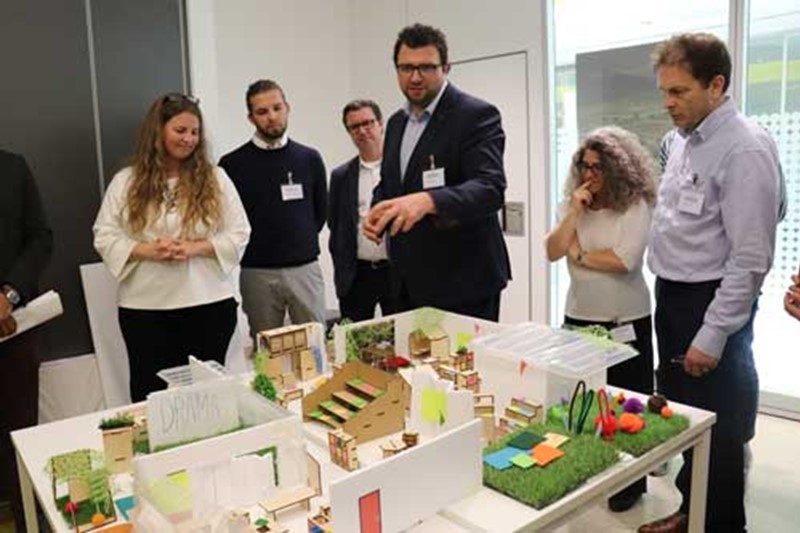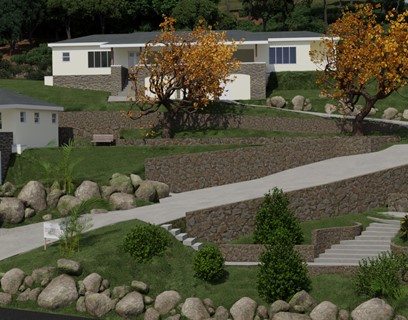
Our world continues to change at a dramatic pace and yet the learning spaces our children spend so much time in have not. Lene Jensby Lange is an entrepreneur, consultant, and learning space design expert. She is the founder of Autens, a leading Danish consultancy dedicated to re-imagining creative learning spaces. “We seem to be numbing creativity and treating students with a same-size-fits-all philosophy that leaves too many of our students disengaged with their life as learners and not supporting their full potential.” This is the problem Lene set out to solve. She says most teachers tend to ask for “pretty traditional classrooms” without hesitating. But if 21st Century education is to be relevant, engaging, and collaborative in hands-on playgrounds of learning, is that enough?
The Global Search for Education invited Lene Jensby Lange in order to find out more.
“We have learned that really taking into account how our brains are wired for learning and change, and using that to collaboratively reimagine the future of schools, we open up promising paths that everyone can get behind.” – Lene Jensby Lange
Lene, one size does not fit all but what is your process to designing a learning space? What have you learned so far?
We set out to create an intuitive tool that would help teachers imagine powerful future practices based on research in learning and what the future looks like for our students – and at the same time using that tool to create strong design briefs for schools of the future and not the past.
Typically, new school facilities are being developed by small building committees with only a handful of the teachers present, with architects making the most important decisions. However, if you haven’t engaged your entire teaching staff in a thinking process around the future of learning and you then design for it, they are likely to either not be able to use the new spaces to their full potential or even reject the new design as dysfunctional altogether. Most school designers would recognize these scenarios. It is important to understand the building design and interior design as physical representations of a learning culture. A culture is something we share. This is why it is crucial to involve the entire teaching staff when we make decisions around something as significant as the buildings and interiors that help shape what we are able to do in those buildings.
our solution turned out to be really straight-forward: modeling design-thinking and project-based learning, we created the learning space design lab ©. We invite entire teaching staff engage in a very hands-on activity of showing future at their school through physical doll-house models, working particular protocol have developed over past years experience with this. They work teams, what happens is that begin negotiate new structures activities centered around student needs. It’s highly engaging, collaborative playful. Discussions, reflections and even negotiations are done hands-on more than in words and it allows much radical approaches enter the picture take center-stage.
We often do the same process with students too as we want their voice to strongly influence the new school as well.
So the purpose of the design lab is two-fold: We aim to create inspired design briefs for future-oriented schools (or just class-room redesigns on smaller scale projects) developed and supported by the whole organization – and we aim to simultaneously kick-start the professional development required to work in those spaces. The design lab helps us do that, navigating the complexity of design in an open, playful process.
We have learned that really taking into account how our brains are wired for learning and change, and using that to collaboratively reimagine the future of schools, we open up promising paths that everyone can get behind. Since we developed the Learning Space Design Lab we have not had a single teacher request a traditional classroom. It’s been a powerful lever for joint decisions of change.
“The days of same-size-fits-all are no longer a match for the future lives of young people today.” – Lene Jensby Lange
We are in the midst of an industrial revolution that is changing our world at dramatic speeds – putting individual student’s passions at the center of the learning is the trend. Does the same size-fits-all work any longer?
I strongly believe that we need to make learning in classrooms everywhere engaging, authentic and personally as well as contextually relevant. The days of same-size-fits-all are no longer a match for the future lives of young people today. We need to allow students to play and explore open-ended and let them follow different paths of interests and passions. We need to expose them to a large variety of areas that might spark their engagement. They need to discover what brings value to their lives and their communities. Education is not just about making a living but about inventing a life.
How would you describe your greatest accomplishments with Learning Space Design Lab to date?
We have begun to see a new generation of learning spaces emerge, suited to multiple ways of working and learning and with a strong focus on personalization and well-being. These are spaces where teachers can be creative, setting up many different approaches to learning, and they are spaces where each student has a choice and a voice in how and where they work. It is a much freer, flexible and truly inclusive environment enabling schools to support many different learners in their needs and choices. It often looks more like a modern creative work space than a typical school. The most important thing is the buy-in from a motivated staff as it requires quite an effort to take teaching and learning into a new fast-changing Millennium.
The feedback we get from students, teachers and even parents is truly promising. We have clear indications that students are better able to focus, that conflict levels are lower, and even that – in the words of one of the students – ‘the teachers are much more quiet now’, implying that the spaces have become an invisible teacher helping scaffold students learning and support constructive behavior.
The new Sønder Otting School in Haderslev, Denmark is a good example of a whole new generation of school design that would otherwise probably just have been a set of classrooms. The new school is a collection of learning villages for 75-100 children with a team of teachers working collaboratively to both design and facilitate meaningful learning journeys. Each child will belong to a ‘family’ or home group but will work across the whole area and collaborate across the different home groups too. The ‘village’ is a suite of different size rooms and open spaces – from gathering spaces for the entire group to maker zones, collaboration zones, presentation zones and a range of small nooks where students can curl up with a book or hang out with their best friend.
“This is not just about design. It is about shaping a new shared culture of teaching and learning and thus about organizational development alongside reimagining the spaces for the future.” – Lene Jensby Lange
What have been the greatest challenges in your work – what did you learn?
Changing the design of learning spaces is for the purpose of changing how teaching and learning plays out, which is the single greatest challenge we face – and are not always successful with. It requires teachers to embark on a journey of change where new student roles and teaching formats emerge, which is not always easy. With new spaces they can no longer just continue ‘business as usual’ but will have to develop their didactic approaches and free up their teaching, inviting students to become co-creators of their own learning journeys. Often it is a team effort as we see a shift away from single-cell classrooms to larger, varied learning hubs that allow for more interaction across cohorts and teachers working in teams around the different groups of students. As with any other organization it takes time and deliberate effort to develop new practices, and you will find yourself in dead ends at times – often just before those break-throughs where you are able to take it to a whole new level.
We are focusing a lot on how we can support that process as a new space design will only be successful if you take advantage of the potential for change that it presents.
What are you working now for the future?
We are currently looking into how we can make the Learning Space Design Lab available globally, partnering with school designers in different countries.
As it is a physical tool that needs some level of production, it is tempting to create a digital version in the future. However as human beings, we are wired to learn through collaboration and physical interaction with the world, and the digital opportunities available to schools today are not yet at a level where that is possible. There is a very visible magic to using your hands to create, to prototype, to explore. And in a collaborative setting there is a wealth of ‘micro-communication’ between colleagues taking place without words that we strongly believe is key to a new shared vision for the future. This is not just about design. It is about shaping a new shared culture of teaching and learning and thus about organizational development alongside reimagining the spaces for the future.


